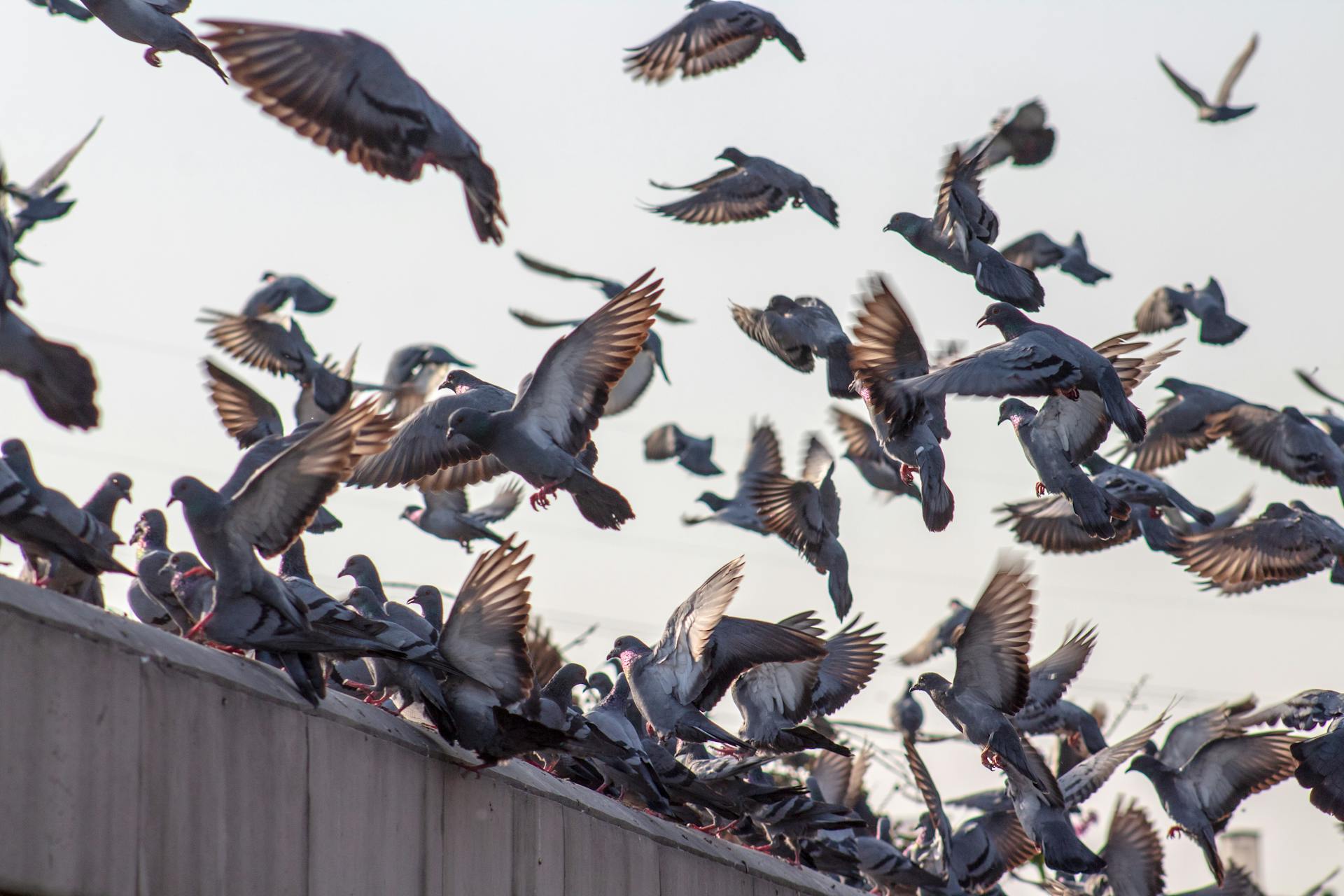In a bold move to combat climate change and reclaim unused kinetic energy, Tokyo has begun installing miniature wind turbines on city pigeons. The initiative, dubbed Project FeatherVolt, aims to harvest the ambient breeze generated by urban wingbeats, particularly during rush hour, when pigeon traffic peaks near convenience stores, escalator landings, and vending machine clusters.
“We realized the city’s most consistent wind source wasn’t the sky,” said a spokesperson. “It was the birds.”
The turbines are affixed gently to the pigeons’ backs using biodegradable harnesses made from konjac fiber and recycled train ticket stubs. Each unit weighs just 18 grams and features a dual-blade rotor, a micro-generator, and a tiny LED that glows faintly when the bird is in motion. The design, described by engineers as “a cross between a dragonfly and a USB fan,” comes in three colors: urban moss, commuter gray, and ceremonial glitter.
Urban Breeze as Untapped Resource
According to the Tokyo Bureau of Eco-Optimism, the average pigeon flaps its wings 17,000 times per day. Multiplied by the city’s estimated 13 million pigeons, officials claim this could power up to six vending machines, one emotionally unstable elevator, or a modest podcast studio specializing in ambient train sounds.
The turbines hum softly in D minor, a tonal choice intended to blend with the city’s ambient melancholy. Engineers note that the sound is “barely audible, unless you’re emotionally attuned to disappointment.”
“We wanted something that wouldn’t disturb the pigeons,” said lead engineer Ichiro Hamada. “Or at least not more than society already does.”
Pigeon Reactions Mixed
Early footage shows pigeons adjusting to their new role with varying degrees of grace. Some appear proud, strutting with turbine-enhanced swagger and occasionally pausing to preen their gear. Others have refused to fly, opting instead for passive resistance atop FamilyMart signage or inside train station rafters.
Animal rights groups have expressed concern, noting that pigeons were not consulted. City officials responded by releasing a statement written entirely in cooing sounds, later translated as “We hear you, but the wind must flow.”
A small number of pigeons have reportedly begun forming flocks based on the color of turbines, leading to speculation about emerging micro-identities, such as “Glitter Class” and “Moss Elite.”
Eco Panic or Eco Progress?
Critics argue that the project reflects a growing trend in climate theater, where symbolic gestures replace systemic change. Supporters, however, point to the turbines’ aesthetic appeal and the fact that they “make the birds look like tiny helicopters.” One urban planner said, “It’s not about solving everything, it’s about looking busy while flapping.”
The city has also launched a companion app, FlapTrack, which allows users to monitor pigeon-generated energy in real time. The app includes features such as “Top Flapper Rankings,” “Mood-Based Wingbeat Analysis,” and a loyalty program redeemable for eco-themed stickers.
Expert Commentary
Dr. Nanae Miyagi, professor of Urban Ornithology and Applied Absurdity, notes that pigeons have long been overlooked as renewable assets. “They’re everywhere, they’re underfoot, and they never ask for anything,” she said. “It was only a matter of time before someone tried to monetize their flapping.”
She adds that the project may inspire similar initiatives, such as solar panels on stray cats, geothermal sensors in ramen broth, or emotional composting via unsolicited compliments. “We’re entering an era where every gesture is both a solution and a performance,” she said. “And pigeons, bless them, are the perfect stagehands.”
Policy Implications
The Ministry of Climate Gesture has proposed a new certification: B.E.A.K. — Breeze Energy Acquisition Kinetics
To qualify, pigeons must demonstrate:
- Consistent wingbeat rhythm
- Minimal resistance to glitter-based accessories
- At least one moment of “visible civic pride”
The ministry is also considering a pilot program for Turbine Retirement Benefits, including rooftop nesting rights and commemorative badges. Until then, the import of feather-based energy continues quietly, steadily, and with increasing emotional paperwork.




